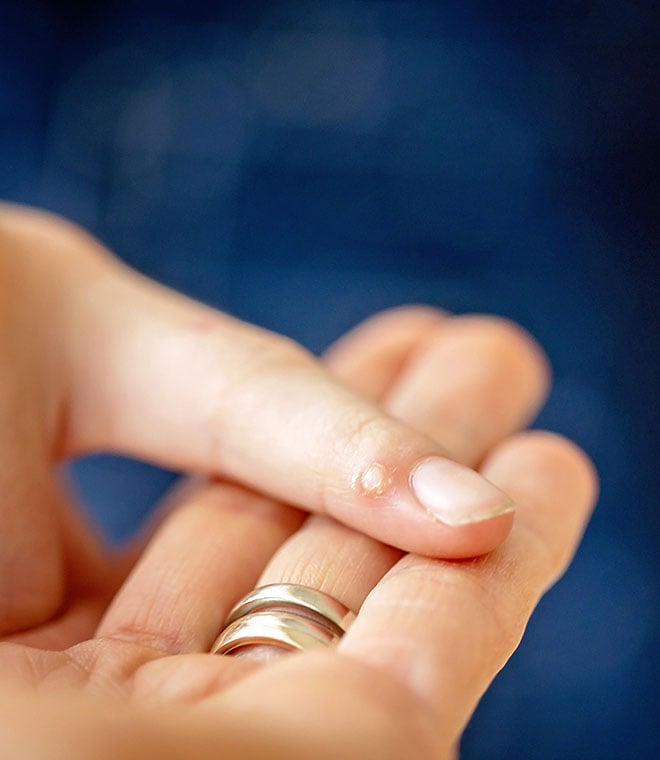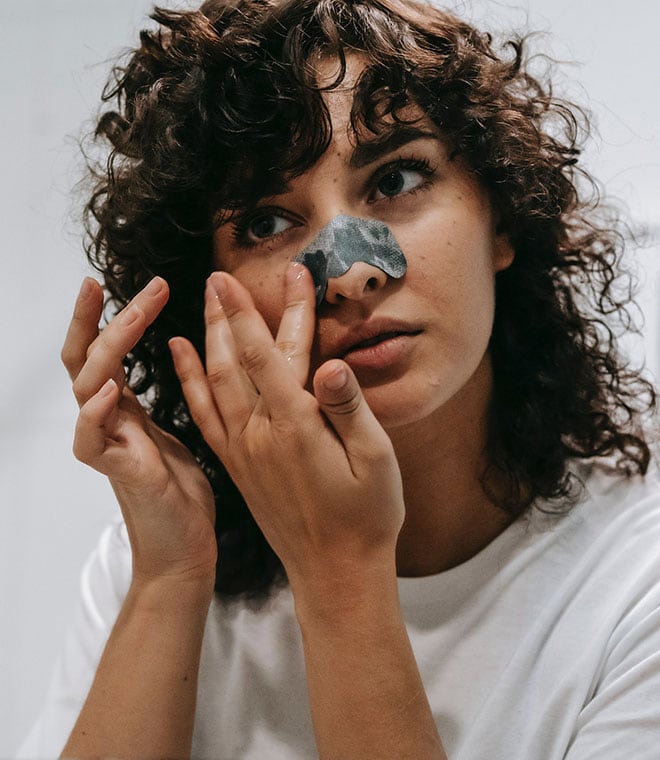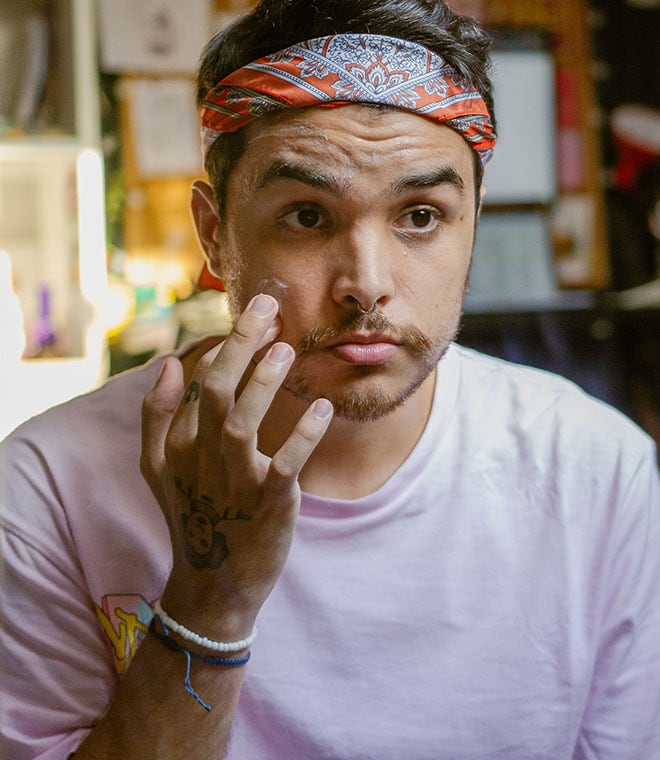Health
What is cystic acne?
By Jenilee Matz, MPH Sep 12, 2023 • 5 min
There are several types of acne. Noninflammatory acne causes blemishes without skin redness and swelling, such as whiteheads and blackheads. Inflammatory acne is marked by redness and swelling. This type of acne can cause painful pimples. If you’ve ever had a painful, deep pimple under the skin, it may have been due to cystic acne.
What is an acne cyst?
An acne cyst is a large, painful and deep lump under your skin that contains pus (nodular acne is similar, but the lesion doesn’t contain pus). Cystic acne can appear on your neck and face, including the jawline and forehead. It can also affect your chest, back and buttocks.
Cystic acne causes
Acne develops when hair follicles become blocked with dead skin cells and oil. This can lead to inflammation and infection, creating an ideal environment for bacteria to thrive. Cystic acne occurs when oil and dead skin cells build up deep within the hair follicles.
Cystic acne from hormones is common. During puberty, levels of certain hormones, called androgens, increase in males and females. This causes the sebaceous glands on the skin to get bigger and produce excess oil, called sebum, which can lead to breakouts. Fluctuating hormone levels can also cause acne in adults. For instance, women may experience hormonal cystic acne around their periods, during pregnancy or menopause, or after starting or stopping birth control pills.
What’s the difference between a cyst vs. a pimple?
The term pimple is often used to describe pustules. A pustule is a small, red, tender blemish on top of the skin with pus at the tip. While cysts also contain pus, they’re located deep under the skin and tend to be painful.
Treatment for cystic acne
Cystic acne is considered a more severe form of acne. In general, over-the-counter (OTC) products are not strong enough to treat cysts. Instead, consider seeing a dermatologist (skin care doctor). They may prescribe one or more of these acne treatments:
- Oral antibiotics. These medications can decrease the redness and swelling caused by acne.
- Topical medications. Medicines you apply to your skin can reduce bacteria and clogged pores.
- Birth control pills (females only). Certain combination birth control pills can clear up skin.
- Spironolactone (females only.) An anti-androgen medication. This medication stops androgens from affecting oil-producing glands.
- Isotretinoin. (Accutane, Amnesteem, Claravis and others.) A powerful retinoid. This is the only medication that works to kill bacteria, unclog pores, remove excess oil and reduce inflammation. It often clears up acne for good. However, isotretinoin isn’t an option for everyone. It comes with the risk of serious side effects, including miscarriage and serious birth defects if you take it during pregnancy. Everyone who takes this drug must participate in a special monitoring program.
Removal of an acne cyst
If you are wondering how to shrink a cystic pimple, know that you should not try to remove it on your own. Picking or squeezing blemishes can make them worse, and possibly lead to infection and scarring. But your dermatologist can help. They can inject the cyst with a corticosteroid or drain it to reduce its size and inflammation.
While cystic acne can be bothersome and unsightly, know that it can be treated. Keep in mind that successfully clearing up acne can be a matter of trial and error. The treatment that works for one person’s cystic acne may not work for yours. Work with your dermatologist. Together, you can create a treatment plan to get you on the path toward clear skin.
Clinically reviewed and updated by Julie McDaniel, MSN, RN, CRNI September 2023.
Sources:
- https://www.aad.org/public/diseases/acne/derm-treat/severe-acne
- https://www.aad.org/public/diseases/acne/really-acne/adult-acne
- https://www.mayoclinic.org/diseases-conditions/acne/symptoms-causes/syc-20368047
- https://www.uptodate.com/contents/acne-vulgaris-management-of-moderate-to-severe-acne?topicRef=42&source=see_link
- https://www.uptodate.com/contents/acne-beyond-the-basics
- https://my.clevelandclinic.org/health/diseases/21737-cystic-acne
- https://www.aad.org/public/diseases/acne/causes/diet
- https://my.clevelandclinic.org/health/diseases/12233-acne
- https://my.clevelandclinic.org/health/diseases/22765-inflammatory-acne



